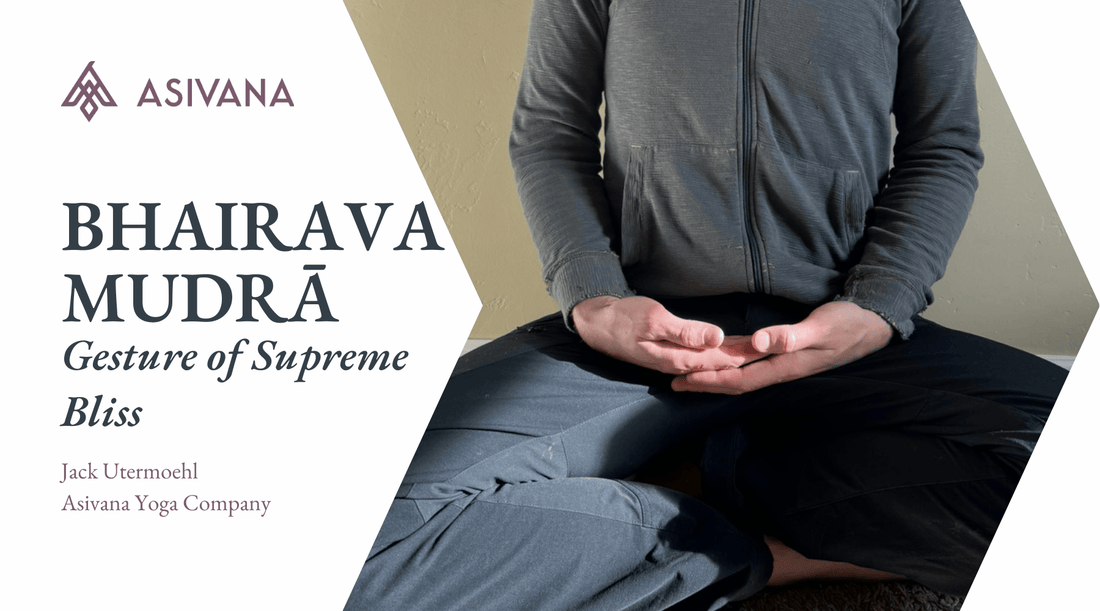
Bhairava Mudra - Gesture of Supreme Bliss
Jack UtermoehlShare
Bhairava Mudra (Gesture of Supreme Bliss)
Sanskrit Name: Bhairava Mudrā - भैरव मुद्रा
English Translation: Gesture of Supreme Bliss
Phonetic Spelling: Bhah-ee-RAH-vah Moo-Drah
Bhairava mudra, known as the gesture of supreme bliss, is a powerful hand gesture that represents the union of masculine and feminine energies within the practitioner. Named after Bhairava, a fierce aspect of Lord Shiva symbolizing the dissolving of fear and ignorance, this mudra invokes deep inner peace and connection with the divine.
It is a gesture of surrender, symbolizing the transcendence of duality and the realization of oneness.
Right Hand (Masculine Energy): Represents the sun, dynamic action, and willpower. Placing the right hand on top symbolizes the integration of these qualities.
Left Hand (Feminine Energy): Represents the moon, receptivity, and intuition. The left hand's position underneath symbolizes the grounding and stabilizing of these qualities.
This mudra is often used in meditation to bring balance to the mind and body, harmonizing opposites such as activity and stillness, strength and softness. It enhances feelings of peace, completeness, and bliss, making it a key mudra for spiritual awakening and self-realization.

Instructions to Perform Bhairava Mudra
Find a quiet and comfortable space to sit. Allow your body to relax, with your spine straight and your breath steady.
Hand Position: Place your right hand on top of your left hand, palms facing upward. The thumbs can either be relaxed and touching or slightly separated. Rest your hands comfortably in your lap.
Posture: Sit in a grounded position such as sukhasana (easy pose) or padmasana (lotus pose). If sitting in a chair, ensure your feet are flat on the ground, and your spine is upright.
Breathing Technique: Inhale deeply through the nose, allowing your breath to fill the belly. Exhale slowly, releasing tension with each breath. Focus on the feeling of balance and unity within your body as you breathe.
Duration: Practice bhairava mudra for 15-60 minutes during meditation or pranayama, focusing on the unity of opposites and the experience of inner peace.
Benefits of Bhairava Mudra
Bhairava mudra brings about a deep sense of harmony, balance, and inner peace. It is particularly beneficial for meditation and self-awareness, helping the practitioner transcend duality and realize oneness.
Physical Benefits: Creates relaxation and reduces physical tension, helping to calm the nervous system and balance energy in the body.
Mental Benefits: Encourages mental clarity, reduces anxiety, and enhances focus by balancing the left and right hemispheres of the brain.
Emotional Benefits: Cultivates emotional balance, helping to dissolve feelings of separation and fear, and promotes a sense of wholeness and inner bliss.
Spiritual Benefits: Enhances spiritual awareness, facilitates a sense of oneness with the universe, and supports the practitioner in experiencing supreme bliss through unity and balance.
Capture your insights and deepen your connection with our Yoga Journal.Elevate Your Mudra Practice
Symbolism and Meaning of Bhairava Mudra
Bhairava mudra symbolizes the union of opposites—male and female, strength and softness, activity and stillness. The balance of the gunas—tamas as stagnation, rajas as activity, balanced create a sattvic state.
By placing the right hand over the left, the practitioner honors the masculine and feminine energies within, balancing the two forces to create a state of harmony. In yogic philosophy, this mudra represents the dissolution of duality and the realization of the non-dual nature of the self.
Named after Bhairava, a fierce aspect of Lord Shiva, this mudra also signifies the destruction of ignorance and fear, helping the practitioner transcend limiting beliefs and experience the supreme bliss of self-realization.
When to Practice Bhairava Mudra
Bhairava mudra is ideal for meditation. It can be particularly beneficial when seeking to dissolve feelings of duality or when looking to connect with the deeper aspects of self.
Practice this mudra when you feel disconnected or fragmented, as it encourages a return to wholeness and unity. It is also useful when seeking emotional balance or spiritual insight.
A duration of 15-60 minutes is recommended, though shorter periods can also be used for meditation.
Contraindications for Bhairava Mudra
Bhairava mudra is safe and accessible for all practitioners. There are no known contraindications for this mudra.
Additional Insights on Bhairava Mudra
Affirmations: "I honor the unity of all things within me." / "I am whole, complete, and at peace."
Visualization: While holding Bhairava mudra, visualize two opposing energies within you—such as light and darkness—merging into one harmonious flow of energy. Feel the sense of unity and balance spreading throughout your body and mind.
Associated Chakras: Bhairava mudra primarily activates the Sahasrara (crown chakra), creating spiritual awareness and connection to the divine.
Paired Asanas: Works well with seated postures such as sukhasana (easy pose) or padmasana (lotus pose) for grounding and balancing energy.
Related Pranayama: Pair with nadi shodhana (alternate nostril breathing) to balance the left and right hemispheres of the brain or ujjayi breath (victorious breath) to deepen the sense of calm and inner harmony.
Meditation Techniques: Bhairava mudra is ideal for use in non-dual awareness meditation or mindfulness practices focused on inner balance and spiritual realization.
Variations and Modifications
Alternative Hand Positions: Bhairavi mudra, a variation, is performed by placing the left hand over the right, symbolizing the feminine energy over the masculine.
Adaptations for Beginners: Beginners can start by holding the mudra for shorter periods, such as 5-10 minutes, and gradually increase the duration as they become more comfortable.
—— 🕉 ——

Personal Insights
My go to meditation mudra. With sight to see reality for what it is, without judgement, without conditions. Sometimes called "gesture of fierceness", Bhairava mudra is about being fiercely courageous to go where few choose to go.
Into the depths of our consciousness lies the greatest of mysteries, one that entirely eludes current day sciences, although I believe we're moving in the right direction.
I love to be in this space and if you ever see me at a yoga festival or at my local yoga studio, you'll likely see me perform Bhairava mudra as I turn my attention inwards.
Let me know your experience with Bhairava mudra in the comments below.


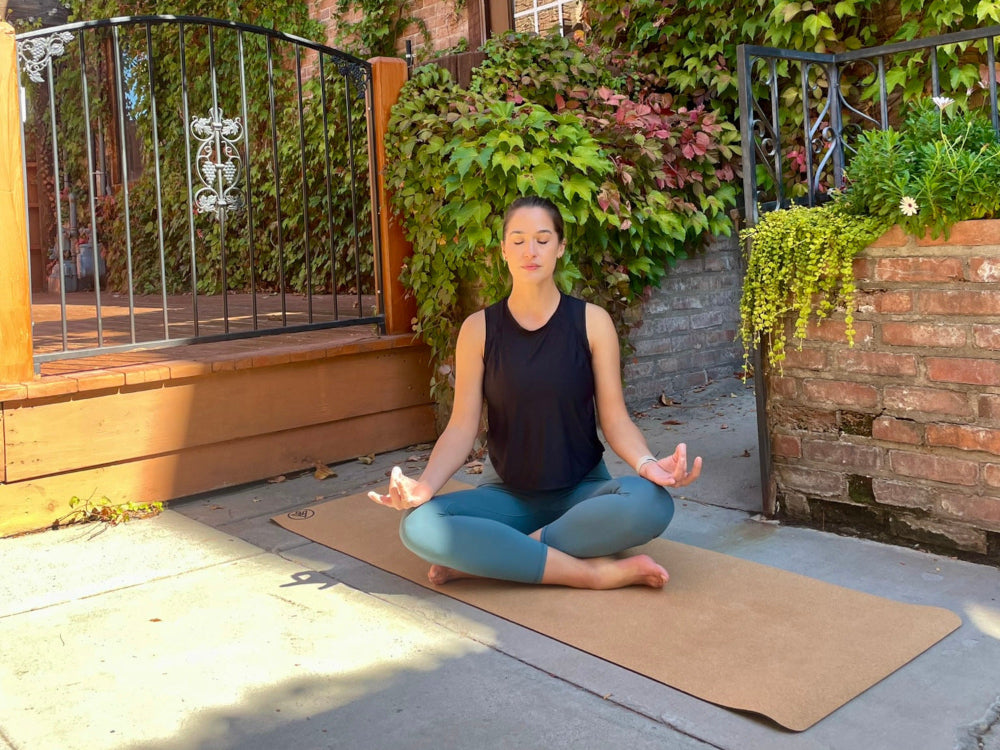


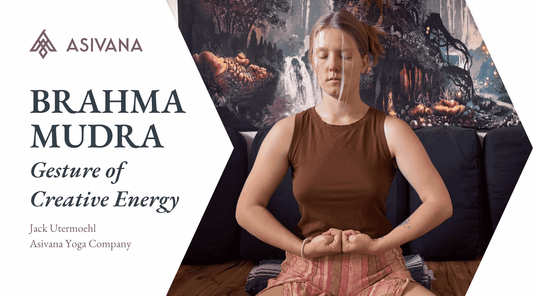
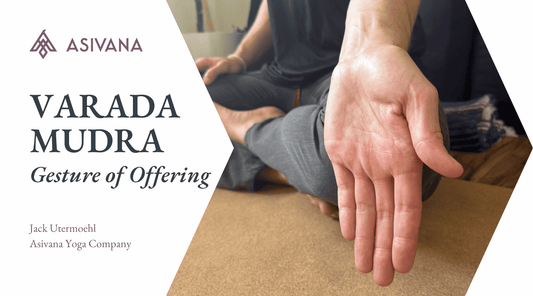
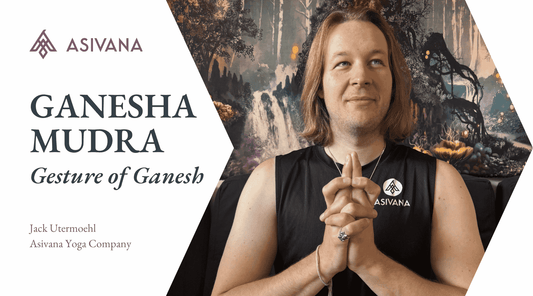




2 comments
thanks for the wonderful resources… wondering what, if any, variation of benefits come with variation of hand placement? fem on top of masc. in this case..
Is there any physiological benefits in Bhairava Mudra ?